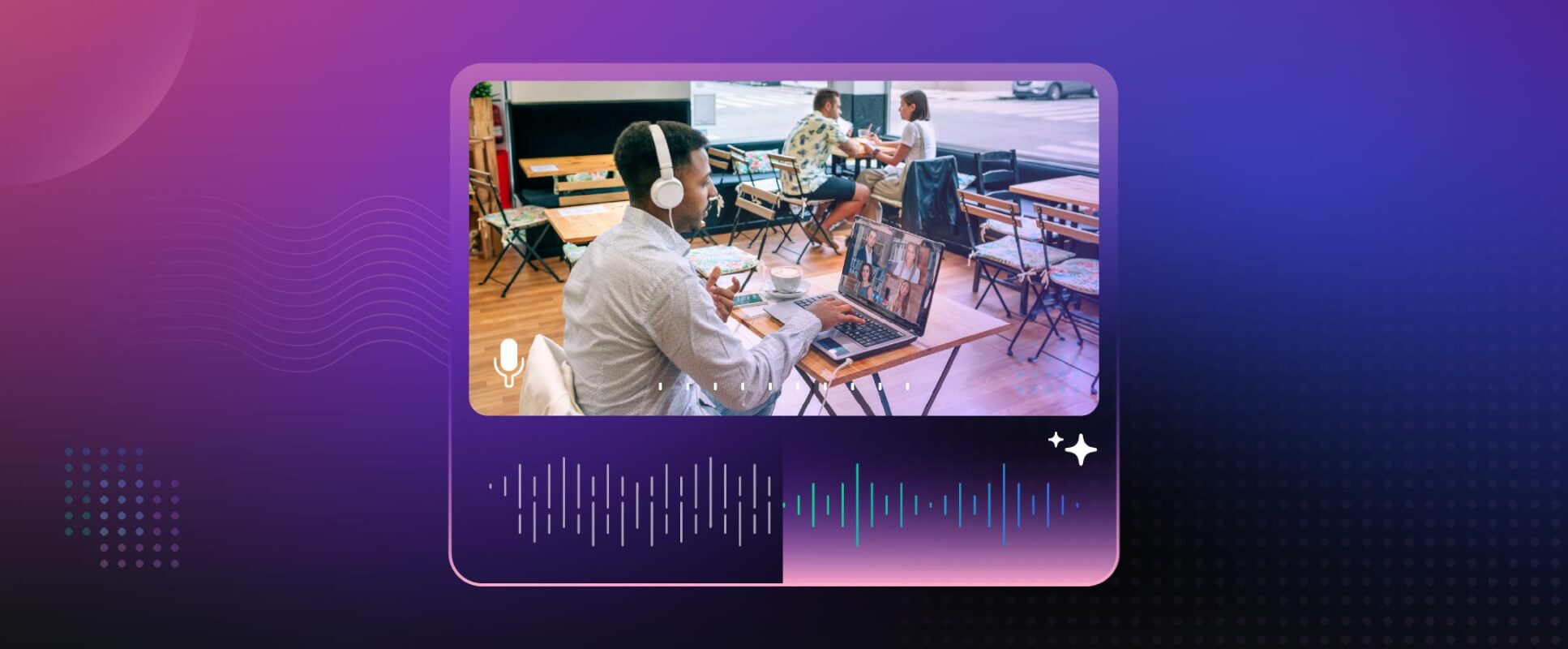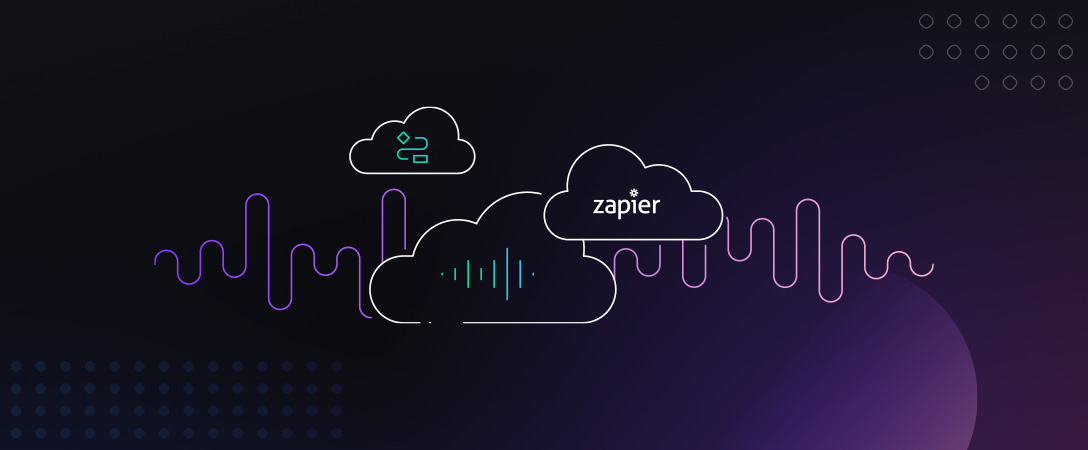Delivering the best content out there means coordinating countless moving parts—from storytelling and topic to visuals and distribution.
For many creators, though, there’s one aspect that’s easy to neglect: audio. And doing so can have a negative effect on your engagement. Poor-quality audio makes you look less credible and directly impacts engagement and retention.
Whether you’re preparing a podcast, video, or marketing promo, you can’t go without a proper audio enhancement process to make sure you get the best sound quality. High-quality audio helps make your content stand out, engage the most people, and clearly communicate your message.
The Importance of High-Quality Audio
There are two main reasons why you can’t neglect audio quality in your media content:
Audio Quality Can Impact Engagement and Retention
Great audio keeps your audience members engaged—and keeps them coming back for more. If your media has glitchy audio and is full of distracting nuisances that get in the way, what reason do they have to stick around till the end?
Since audio quality has such a strong impact on retention, it also affects rankings on content platforms such as YouTube. According to YouTube’s Creator Academy page, videos with high retention are more likely to be ranked and suggested on its platform.
If you plan to use your podcast or video content to promote any product, low-quality audio could hurt your conversion rates and sales. With less engagement due to poor audio, your audience won’t have the patience to listen through and learn about your offers.
Poor Audio Quality Makes You Look Less Credible
The quality of your audio can influence whether or not your audience trusts the information they’re receiving.
To test this, a study from the Australian National University (ANU) and the University of Southern California (USC) had participants view and rate two different scientific online conferences from NPR’s Science Friday program. Both conferences were on the same subject, but with a key difference: one had high-quality audio, while the other had low-quality audio.
Once they were done viewing the conference, each group participant had to rate the scientist’s talk. They found that participants were less likely to find the speaker’s research credible when low-quality audio was present in the conference, even though they were using the same arguments to back up their points. In other words, audio quality directly affects audio perception.
5 Key Components of Audio Enhancement
So, what does it take to deliver the best high-quality audio for your audience? Here are the best techniques for delivering an exceptional audio experience, along with the solutions Dolby.io offers for each one:
1. Noise Reduction
Unwanted noise that shows up in your media can get in the way of a pleasant listening experience. On top of that, depending on how bad the noise is, it can be a headache to try to get rid of in your media when you’re done recording.
There are two types of unwanted noise:
- Stationary noise is a background sound from a single source that plays across the entirety of your media. Examples can include air conditioning or frequency interference from your audio equipment.
- Non-stationary noise only shows up at cyclical times in the audio signal. Examples are keyboard typing, kids playing in the room, or construction happening outside.
Regardless of whether you’re dealing with unwanted stationary or non-stationary background noise, Dolby.io Enhance API’s noise reduction technology helps detect and get rid of background nuisance—all with only a few clicks. That way, your audience won’t be distracted from any background nuisance that shows up in your content.
If you’re mixing the sound of an upcoming video you want to release, you won’t have to separate the audio from the video. You can upload the video media file within Dolby.io, and our platform will automatically enhance its audio quality.
Check out the following video to see Dolby’s noise reduction in action.
2. Speech Isolation
Speech isolation enhances the audio quality of your media file by making speech louder relative to non-speech sounds and bringing the dialogue forward.
Combining both speech isolation and noise reduction helps deliver a clear, exceptional audio experience. It only allows the best parts of your media to shine for the listener while all the other unwanted nuisances get pushed behind. In return, it creates a better listening experience that makes your audience stick around till the end and want to learn more.
To further block unwanted sounds and highlight certain parts of dialogue, you can use the Dolby.io Enhance API to isolate and increase speech. The API will suppress any nuisance that isn’t caused by speech or dialogue so that the listener can hear every single word clearly.
3. Loudness Correction
Loudness correction lets you measure (and validate) loudness levels to be within a particular range. It lets you confirm whether your media file is ready for delivery, saving you plenty of headaches down the line.
Why is loudness reduction so important? If you plan to release your content to a broadcasting platform, there are various loudness standards your media file must respect to establish a consistent experience for consumers. These standards will differ based on your content format—podcast episodes will have different loudness standards to audio for a TV show. If your media doesn’t comply with these standards, broadcasters will reject it.
Including the Dolby.io Analyze API lets you automatically inspect the loudness levels of your media file and see how they match up to broadcasting standards. From there, you can use the Dolby.io Enhance API to adjust your track’s loudness levels so it matches a specific frequency range.
4. Sibilance Reduction
Sibilance is the repetition of “s” sounds that creates a hissing, high-frequency sound throughout a media file (typically in the 5 kHz to 8 kHz range). Examples of phrases that could create the hissing sound are “whistling policeman” or “specific certainties.”
Sibilance is impossible to avoid entirely in your audio. That said, if it’s not under control within your media file, it can get annoying for the listener and distract them from the core subject of your content.
The Dolby.io Enhance API comes with an algorithm for reducing sibilance reduction. It detects the “s” sounds by analyzing the frequency regions of your media and gives you control over how much of the sibilance you want to attenuate.
5. Plosive Reduction
Plosives are popping sounds that show up in your media file. They occur when someone in the dialogue is using heavy consonants, such as pa or fa sounds. In return, these heavy consonants put a lot of air pressure on the microphone, which later creates unwanted popping sounds in the track.
Using the same analysis method as for sibilance, the Dolby.io Enhance API detects these bursts of popping sounds and applies dynamic processing to filter them out. That way, you can maintain a dialogue that sounds like natural speech.
Give Your Audience the Audio Quality They Deserve
Audio enhancement will make your media pop and keep your audience coming back for more. It will help amplify the results you want from your content, leading to more subscribers to your podcast or more sales from your educational promo videos.
Want to hear the Dolby.io difference yourself? Experiment with a free demo today—upload your media file, and the demo will enhance the content for you within minutes.







